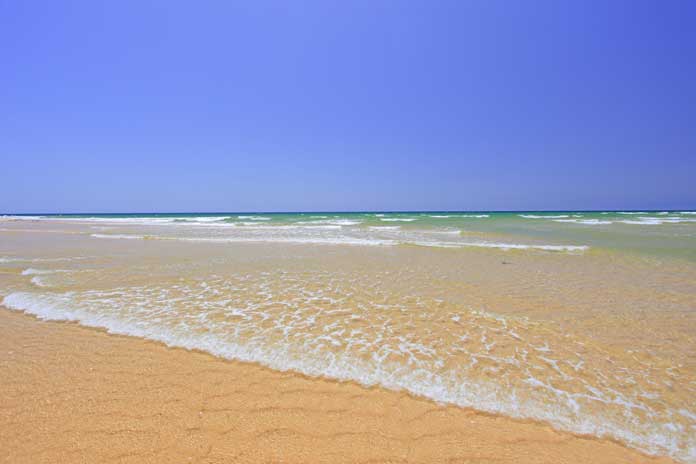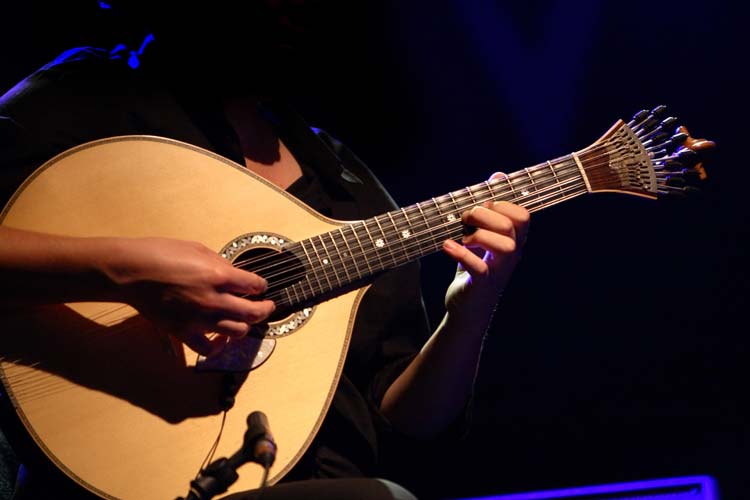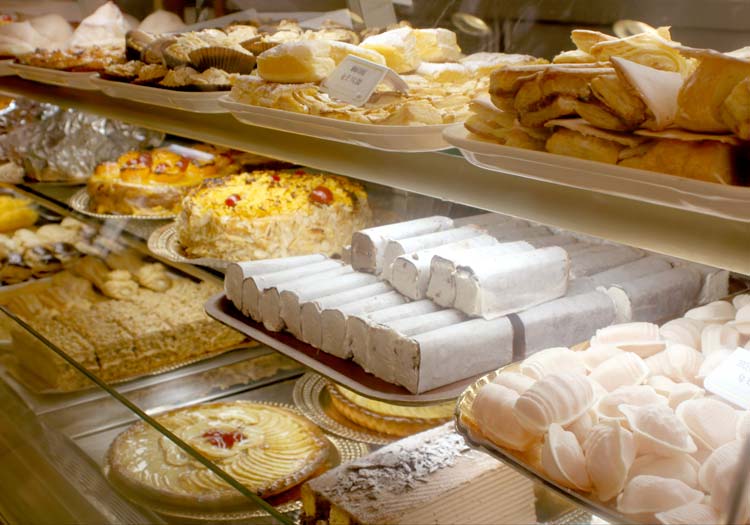“These memories are from my dreams. I keep my eyes open but see nothing. The things I do see aren’t here. Waters. The lush of the trees, through a jumble of entanglements, is part of my blood. Life throbs in my distant heart. I wasn’t meant for reality, but life came and found me.”
Table of Contents
Day 1: Finding waterfronts
I arrived into Lisbon Rossio station and climbed up one of the many city hills to my hostel. It was in the center and close to a square of cafes, full of buskers and bookshops and statues of famous writers, called Lisbon Poets Hostel. Hidden in an old townhouse on the top floor, it’s a great and authentic place to stay. Decorated with wooden bookshelves, local art and armchairs, it embraces the artsy neighborhood surrounding it in the heart of Lisbon.
I asked some Canadians if they knew anywhere cheap to eat; they said no and prepared me for the expensiveness of Lisbon. But I went for a walk and quickly found my favorite spot in the city on the waterfront. The tram lined hills and big red bridge reminded me of San Francisco. There were bars along the water, food stalls and colorful markets, selling soaring prices for fantastic views. I bought a radler and sat on stone steps to watch the sunset.
Slowly walking back and loving Lisbon, I realized that it’s easy to appreciate the city for free, just by exploring it, seeing it’s street art and walking past high old buildings and local cafes. Back at the hostel, I spent the evening writing and working in the large and dimly lighted common room, surrounded by readers.
Day 2: Open windows
The hostel offered breakfast in its lovely kitchen. I asked at reception for a nearby library. I’d seen pictures of exceptional Portuguese libraries, with high walls brimmed full of books and metal staircases. I was recommended a local one, not as extremely grand, but perfect for a morning of working, with an old wooden piano in the corner and open windowed views of the sea. I melted into the scene of students reading around me.
In the afternoon, I enjoyed a local café and learned some basic Portuguese while ordering. It was a day dominated by work deadlines and I didn’t have much time to explore. So, I followed tram lines back to the waterfront and sat again enjoying the sea. I walked along, marveled the huge Lisbon gate for the first time and wandered through the commercial center. To eat cheap, I bought ingredients at a supermarket and made dinner back at the hostel.
The evening was spent the same as the last, with city sounds traveling up from the street and into the open window of the room. There are worse places to write. But I was tired of being hard working and antisocial – and looked forward to meeting friends in the morning.
Day 3: I feel as if I’m always on the verge of waking up
I walked to Equity Point Hostel in the morning after breakfast. Another fab place in the old town of the city, close to one of the steepest, oldest and most iconic tram tracks in Lisbon: the Elevador da Glória. I met friends also traveling Portugal and we took a free walking tour all morning. Starting at Camoes Monument, it journeyed around the central old town of the city. Our guide, Yuri, was a fun-crazy, energetic history fanatic who condensed the entire past of Lisbon into a five-minute speech. It was impressive.
I liked the tour because it focused a lot on Portuguese literature history. He explained the artsy writing vibe you can still feel in the city today. A place full of café culture and elitist creatives discussing and sharing poetry in candlelit corners. A great and romantic European image that was for more than its appearance, having created some of the best literature in the world.
We stood beside Café a Brasileira, a favorite meeting place of Portuguese modernists, with a statue of Fernando Pessoa at his usual table. Yuri read a Pessoa poem outside. I loved the moment and vowed to be more pretentious in my travels. To look up current writing groups or local reading circles wherever I go – and embrace the culture of classic European writing circles that once created my favorite literature from the early 1900s.
The tour also explained the devastating Great Lisbon Earthquake of 1755; how it destroyed about 85% of the city, was followed by a tsunami and a fire and created a huge divide in the history, architecture, religion, and culture of Lisbon. The walking tour, like most in Europe, was donation based on how much you enjoyed it.
Day 4: Lisbon nights
On the evening of my fourth night in Lisbon, we fully embraced the amazing nightlife of the city. We started by following the crowds to the streets of Barrio Alto. The old small streets are packed with busy bars selling cheap beer and cocktails, quieter traditional pubs, chilled clubs and many people scattered outside. It’s a great city for any kind of party, always guaranteeing a late and fun night.
Originally, we wanted to travel to Porto this weekend. Every year on 23rd June, Porto hosts an epic and traditional festival celebrating St John’s Eve, called Festa de São João. But we hadn’t been prepared; hostels were either sold out or incredibly expensive. And the only Couchsurfing reply had offered us a mattress in an empty warehouse he was renovating, which we politely declined.
Some people told us that Lisbon didn’t celebrate São João. Either they were being modest or dismissing the party in comparison to the whole-city-celebrations of Porto, but there was an incredible street party in Lisbon anyway. One section of the city was dedicated to it, decorated with colorful flags, makeshift bars, and a wooden stage built above the street. We drank cheap beer, enjoyed the entertainment of a wild nearby stag group, met people from around the world and concluded that Lisbon was simply an amazing place to party.
Day 5: Discovering destinations
I had moved to Sunset Destination Hostel the day before. A huge and fancy hostel, it was a wonderful place to stay, directly on the waterfront in the center of the city. You caught views of the sea from every window, and even better from the rooftop bar and pool. With constant music, drink and people on the roof, you could easily stay all day relaxing and enjoying the expansive views, slowly preparing for the evening.
For me, it was a sunny and relaxed place to work without feeling boring, which I did all afternoon. After having been to the beach. It’s easy to escape to the sea from Lisbon. You can catch a 30-minute train to Carcavelos and other coastal stops from Cais do Sodré station. We relaxed all morning on the beach, swam in amazing waters and enjoyed the sun.
I moved to another Destination Hostel in the city, called Lisbon Destination Hostel, found inside Rossio Station. Although this one didn’t have a rooftop, it was just as impressive and luxurious as the one before. Equipped with pool tables, hammocks, a massive kitchen, an Apple guest computer, spotless bathrooms and large rooms, it takes hostel travel to a new level.
In the evening, we embraced the chance to listen to Fado, the mournful and melancholic traditional music of Portugal. It plays a role of significant cultural heritage, making it a must experience of Lisbon. Most hostels offer a Fado tour in the night, which guides you to local bars and explains the history and culture. But Fado bars are free to enter; you just buy a drink, sit down and enjoy. We were invited into a small room, where the locals sang along to many of the songs.
Day 6: Natas and Ginjinhas
My last moments of Lisbon were completed by a wander around Alfama, the only surviving neighborhood from the earthquake and oldest area of the city. The tiny roads are addictive to explore and easy to lose yourself in. Flowered metal balconies, an array of colorful street art, high lookouts of the city and historic tram lines navigating the labyrinth of streets. Alfama is also the best area to find two of the most iconic gastronomical treats of Lisbon – cafes selling exquisite nata pastries and bars offering Ginjinha, a classic cherry liqueur.
I thought how wonderful a place Lisbon would be to live. It seems to have everything: historic streets, a buzzing nightlife, an alternative scene, an open waterfront, cheap drinks, great food and coffee, nearby nature, beaches, interesting culture, epic buildings, a chilled atmosphere and lovely people. It seems inevitable to be back soon. In the end, I loved Lisbon so much I stayed twice as long as intended. That’s the wonderful thing about Interrailing – the freedom to stay some places longer and leave other places sooner.
On my way to the station, I quickly stopped at the Bertrand Bookstore. Opened for 281 years, it is officially the oldest bookshop in the world. I wandered around and loved books for a while. But not too long; I was late for a train to Porto.





